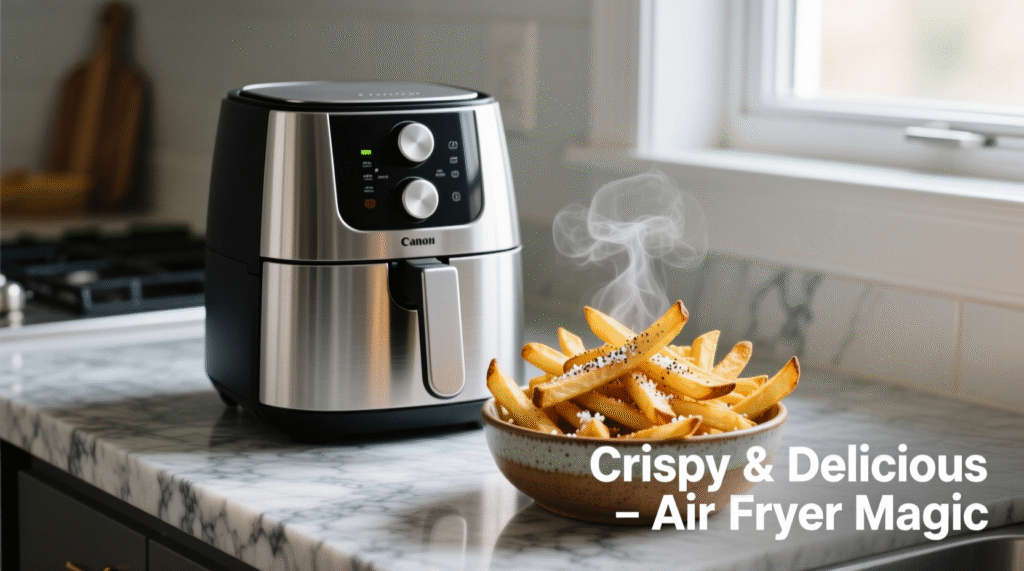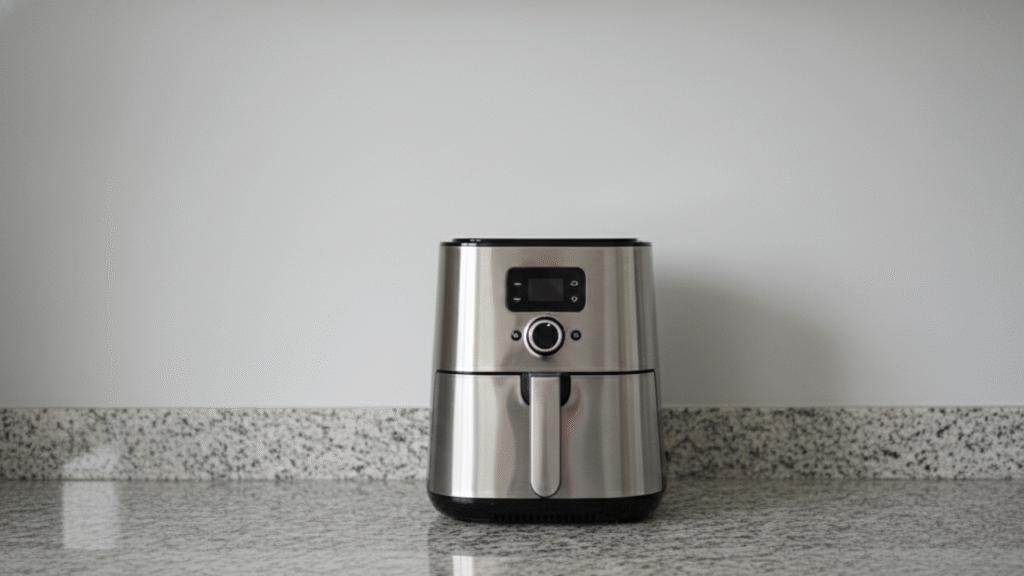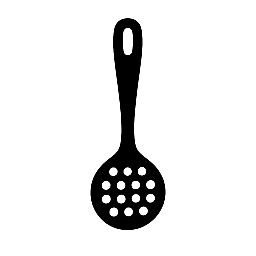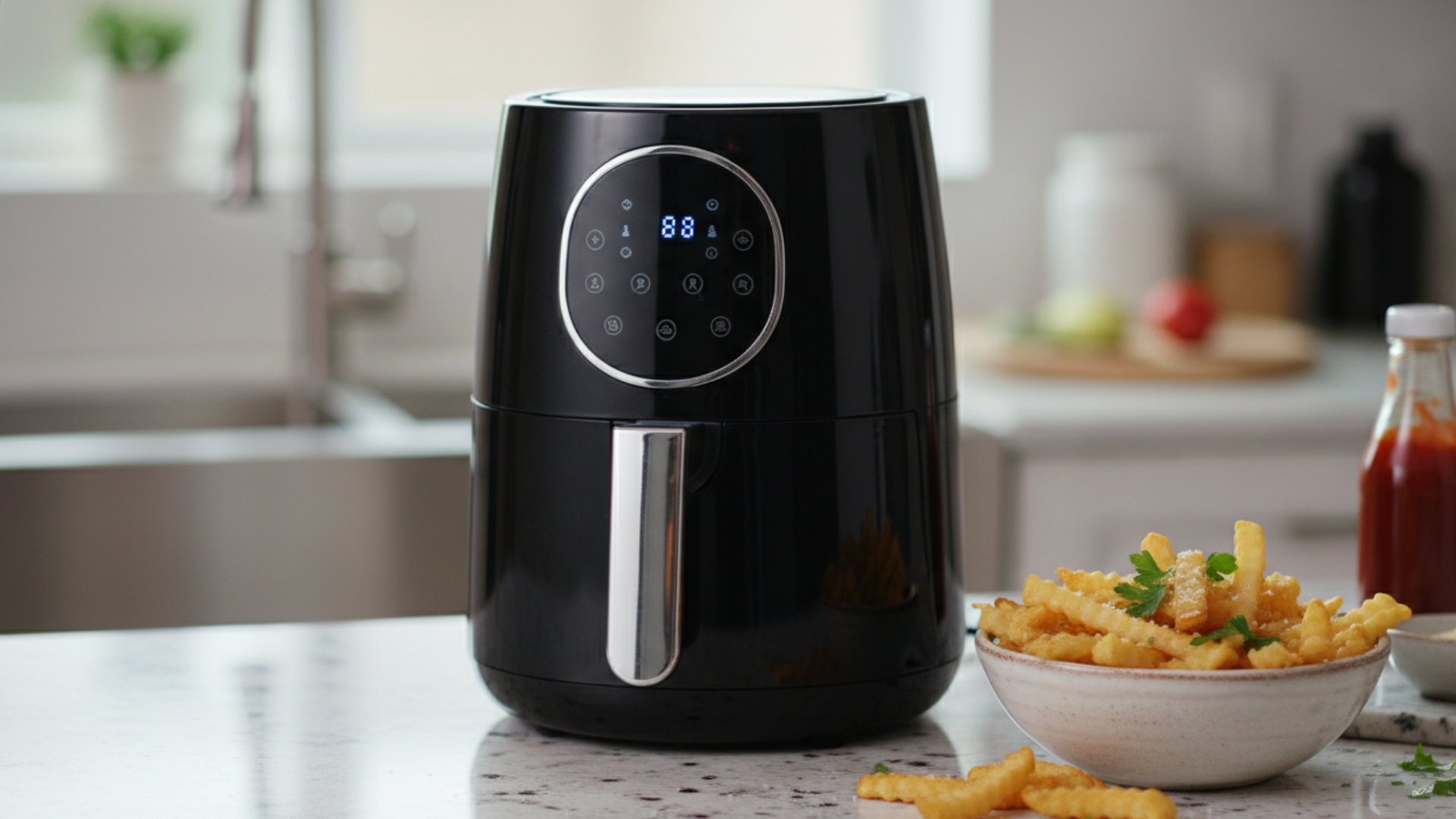If you’ve been reconsidering the air fryer over the last few weeks, you’re not in this alone. These kitchen gadgets have taken over countertops everywhere — and for good reason. But if you’re going to hop aboard the bandwagon, you may be wondering: what makes these things tick? So how does a machine “fry” food with air alone? Let me explain.
The Air Fryer’s Basic Principle
Here’s the thing: air fryers don’t actually fry anything. I know, the name is a little bit misleading. Instead, what they really do is circulate hot air rapidly around your food. Think of it as a small, powerful convection oven — right on your countertop.
It’s all done via something known as rapid air circulation. The air fryer heats air to cook your food at a temperature of about 300°F to 400°F and circulates the hot air around your food very quickly. This leads to a crispy outer layer similar to deep frying, but without immersing your food in a pool of oil.
What Actually Draws Air in an Air Fryer?
To get a sense of how air fryers work, let’s start with what’s inside one of these machines.
Most air fryers have heating elements at the top. It is normally a coil that gets super-hot when you switch the machine on. Right next to that heating element, you’ll see a fan. The fan is the true workhorse of the event.
Under all this, there is the basket or tray on which you lay out your food. This basket usually has holes like a mesh, so that the hot air can circulate around all sides of whatever you are cooking. Some air fryers come with a solid pan beneath the basket to catch any drips or crumbs.
It’s all sealed within an insulated shell that traps heat inside while keeping your kitchen cool.
Step by Step: What Happens When You Turn It On
So let’s walk through what happens when you make, say, french fries. First, you put the food into the basket. Most people add a tiny bit of oil at this point–maybe a tablespoon or less. Not a lot.
When you turn on the air fryer and dial in your temperature, the heating element activates and begins heating the air around it. In a matter of minutes, the inside temperature will be what you are aiming for — for example, 400°F.
Now this is where it gets a little interesting. This fan spins rapidly and pulls the hot air around the heating element and pushes it down and then around the food. That air is moving in a circular pattern, and that’s why it can cook your food from all sides.
As the hot air flows over the surface of the food, moisture is rapidly removed. This is key. When moisture is vaporized from a surface, that surface turns dry and starts to get a little crispy. The same thing happens in a deep fryer, except there is hot oil doing the work instead of hot air.
The small cooking space matters too. Because everything is concentrated in a small space, the heat is evenly distributed and it’s very intense. There’s no place for it to go, so your food cooks faster than it does in a regular oven.
Why the Crispy Texture Happens

It’s the crispy, golden-brown finish on fried food that everyone craves. Air fryers produce this result through the Maillard reaction. But don’t worry, you don’t need a degree in chemistry to get this.
The Maillard reaction occurs when proteins and sugars in the food are subjected to heat. They decompose, and recombine in different manners, forming hundreds of flavor elements. That’s what gives a browned food that rich complex flavor and the brown color is very appealing.
In a deep fryer, heat is transferred very efficiently by oil and this reaction takes place all over the food’s surface. Oil is a much better heat conductor than air, but if you stir hot air fast enough, it kind of fakes the job.
That is good too with the little oil you used. It is a better conductor of heat than air alone and spreads the browning effect more uniformly over the surface.
How Are Air Fryers and Conventional Ovens Different?
You’re probably thinking, “But I have a convection oven. Isn’t that the same thing?”
Sort of, but it’s not quite the same as that.
Convection ovens also have a fan to circulate the hot air. But they do it in a tighter space, air fryers vs. oven in essence. The fan in an air fryer is usually located directly above the food and the air moves significantly faster than the fan in a convection oven.
This is important because the space you are cooking in an air fryer is minuscule when compared to the space in a standard oven. The hot air has to go a shorter distance, so it hits your food with more heat and more times. This equals quicker cooking and crunchier results.
In addition, the perforated basket allows air to circulate 9 and around food in ways that air just can’t flow when food rests on a flat baking sheet in an oven.
Why Air Fryers Require Less Oil
And that is probably the biggest selling point for most people. Traditional deep-frying, on the other hand, involves you burying the food in oil — you may be using several cups or even quarts for a single batch.
With an air fryer, a little spray or a tablespoon at most is enough. Some people omit the oil completely for foods that already contain some fat. The reason you don’t need as much oil, or any oil in some recipes, is that the air is doing the cooking.
The oil is used only to facilitate browning and impart a little flavor. It is not the main cooking medium any more. That can take calories down a lot. A deep-fried batch of french fries may have 300-400 calories with more than half of them coming from oil soaked in. Fries from the same potato, air-fried, might have 100-150 calories depending on how much oil you use.
Temperature Control and Cooking Times
Most air fryers allow you to set the temperature, typically from 180°F to 400°F. Much like any other cooking method, different foods require different temperatures. tender foods like fish may fare best at 350°F, while frozen foods or items you want extra crispy may call for the full 400°F.
Cooking times are usually less than traditional oven cooking. With such intense heat coming from all directions, it’s no wonder things cook faster. What takes 30 minutes in a conventional oven can be done in 15-20 minutes in an air fryer.
The Importance of Air Flow
Air needs to circulate around the food, in an air fryer electric field, for it to cook. That’s why the majority of recipes advise you to not overcrowd the basket.
“Air flow is key,” says Bowen. The center pieces aren’t exposed to as much hot air, so they cook unevenly. Some pieces may turn out perfect; others end up soggy or not cooked through.
When shaking the basket, many get better results by cooking in 2 or more batches and shaking the basket at mid cooking. Shaking the food as it rests also allows different surfaces of the food to be exposed to the air movement.
The holes or mesh in the tray/ basket serve the same function – they are made in such a manner that air can flow under your food from the top and bottom and not just the top and sides.
Types of Air Fryers
Similar to how not all air fryers are the same in appearance, not all models work the same.
Traditional models have round baskets but there are square air fryers too. It appears as a small machine having a drawer that slides out to the cooking basket. These are compact and work great for most home cooking needs.
Then there are the oven-style air fryers that resemble more of a small toaster oven. They generally come in racks instead of baskets and you can cook more food. Some people like these because you can watch your food cook through a glass door.
You can also get multi-function air fryers that, in addition to air frying, perform other functions such as pressure cooking, slow cooking, or dehydrating. These still use the basic air frying method, but add a few extras.
All models incorporate the same underlying technology: a heating element and a high-speed fan that circulates hot air around your food.
What Air Fryers Do Best

Air fryers are best suited for certain types of dishes. Anything that needs to be crispy turns out great.
Frozen convenience food is just right air fryer food. Frozen french fries, chicken nuggets, fish sticks and mozzarella sticks come out crisp without the sogginess oven baking sometimes imparts.
Fresh vegetables turn out great too. Brussels sprouts, broccoli, cauliflower and zucchini all get a nice char and crispy edges that enhance the natural sweetness of the vegetables.
Chicken wings are probably the air fryer’s claim to fame. They get so crispy on the outside yet hold so much juice on the inside, that they can stand up to – even beat! – deep-fried ones.
Another great use is to reheat fried leftovers. That pizza, fried chicken or onion rings that went soggy in the fridge can be refreshed to almost original crispness.
The Limitations
Air fryers aren’t the right tool for every job.
They don’t work with wet batters. When you try to air fry a liquid batter thing, it all will drip through the basket holes and mess up. The breaded dish needs to have the coating already attached to the food.
Big things are a little difficult because of the tight space. A whole chicken might fit, but a turkey certainly won’t. Air circulation is a consideration that sometimes must be taken into account even for a whole chicken.
Foods that must remain wet all the way through (bread dough, some cakes) aren’t always successful. They can be dried out by the strong air circulation. Leafy greens are a no-go. The strong fan is just going to make them fly around inside the machine.
Energy Saving
One perk of the air fryer that often flies under the radar is its lower energy consumption compared to heating up a conventional oven.
A typical air fryer wattage amount is 1400-1700 W and the usage timing is about 15-20 minutes for a batch of food. A conventional electric oven can use between 2,400 and 3,000 watts, and takes longer to preheat and cook food.
It’s even more important in summer. A large oven bakes up your entire kitchen space. An air fryer traps the heat, so your air doesn’t need to rush out.
For people cooking for one or two, this efficiency makes a real difference on the power bill over time.
Preheat - Is it Necessary?
Some need preheating, others you don’t. It depends on the model and what you’re cooking.
Newer models often heat so fast there is no need to preheat. And since the entire chamber is small, it comes to temperature in just a couple of minutes anyway.
For foods you want really crispy right off the bat (breaded products, for example) preheating briefly can help. But for most of the things you cook every day, just put the food in and turn it on.
Maintenance and Its Impact on Performance
Air Fryers, like many cooking devices, are best when clean. Grease and food residue can obstruct air vents and cause it to smoke.
Most of their baskets and trays are easy to clean and dishwasher safe. The base station just requires a wipe-down with a damp cloth now and then.
If you find your food isn’t crisping like it used to, look for grime in the heating element and fan area. Efficiency can be decreased by a film of oil so thin that it is barely visible.
Achieving the Best Outcome

Here are some practical takeaways:
- There’s no need to eliminate oil entirely on foods that require it. Even a light coating affects texture and taste.
- Give your food breathing room. Better to cook two small batches than one big, crowded one.
- Shake or turn food halfway through cooking This also applies to whole chickens: you should turn them, too, but not to the oven.To ensure even cooking, turn or shake food halfway through cooking. This exposes all surfaces evenly to the moving air.
- Let food dry if wet before cooking. Moisture on the surface needs to evaporate before browning can occur, so starting with drier food means everything will go a little faster.
- Test the recipe times and temperature. Your air fryer may get hotter or cooler than your friend’s, so use recipe times as a guide, not the gospel.
The Bottom Line
Air fryers are essentially small convection ovens, with fans that circulate hot air at high speed to cook food quickly. That’s it. There’s no sorcery, just science and good design.
Although they are called “fryers” because they produce some of the effects of deep frying, they are entirely different in terms of the mechanism. You’re basically just convection-cooking like nobody’s business.
The technology is not groundbreaking — it’s convection ovens on a smaller scale, designed to make things faster and crisper. But that refinement really makes a difference in results, and that’s why these things have become so popular.
If an air fryer is a good buy for you depends on what you like to cook, and how often. Now you understand exactly how they work, so make your choice.
________________________________________
Frequently Asked Questions
How does an air fryer really cook?
An airy fryer cooks by circulating hot air at breakfast speed around your food. A heating element heats the air in the temperature range of 300-400 °F, then a strong fan circulates the hot air within the cooking compartment.
This circulating hot air draws moisture away from the surface of the food and produces a crispy, browned lip through heat transfer and the Maillard reaction. The cook space is tightly contained so heat remains concentrated; cooking is faster than a regular oven as a result.
Is air-fried food healthy?
Air fried foods are usually more nutritious than deep fried foods as they contain less oil and consequently less fat. While deep frying involves cooking foods in enough oil to submerge them, air frying requires only a small amount of oil, in some cases none at all.
The fat and calorie content is dramatically lowered. But “healthy” depends on what you’re preparing. Air fried vegetables or a lean protein are good-for-you options, but air fried frozen processed foods, albeit having less fat than their deep fried counterparts, aren’t necessarily health foods. The cooking method is better, but the ingredients still make or break the dish.
What foods cannot be cooked in an air fryer?
Wet batter foods don’t work because the batter will begin dripping through the holes in the basket before it solidifies. Leaf greens also get tossed about by the fan and don’t cook well.
Big roasts that are not snugly packed may not cook through. Fresh cheese melts and makes a mess. Dishes that have to be very moist the whole way through, such as some breads or custards, might end up too dried out. Whole grains such as rice or pasta that require liquid to cook are also not meant for air fryer cooking.
Can you put raw meat in an air fryer?
Yes, you can cook raw meat in an air fryer. Chicken breasts, pork chops, steaks, hamburgers, and even whole chickens air fry greatly. The hot air circulation cooks the meat through and the high heat provides a good sear on the outside.
Just remember to check the internal temperature with an instant-read meat thermometer to make sure it gets to a safe temp — 165°F for chicken and 145°F for most other meats. Depending on the size of your meat, and your air fryer model, you may need to extend or reduce the cooking time.
Air fryers consume more electricity – is that true?
Air fryers are also pretty energy-efficient when compared to a traditional oven. Most air fryers have the power consumption of 1400-1700 watts and they operate for a maximum of 15-25 minutes of cooking at a time.
A conventional electric oven uses 2400–3000 W and needs to be preheated for longer time and the food cooked for longer time. Energy wise, an air fryer can save electricity in the long run, especially if you’re cooking for just one or two people.
The exact cost will vary based on your local electricity rates, but many people report that using an air fryer in place of an oven has led to marginally lower energy bills.
What are common mistakes when air frying chicken?
The number one mistake is overcrowding the basket so the air gets blocked and the food cooks unevenly. When your model requires preheating and you don’t preheat, the result may be less-crispy skin. Too little or too much oil – a thin coat is best.
Failing to test the internal temperature and instead going solely by time may result in undercooked chicken. Substitute chicken for the first 8 mins then turn, flip and rotate chicken twice more.
In addition, cooking chicken from frozen without changing time and temperature (which is common) leaves the center raw with a cooked looking exterior.
Can I cook sausages in an air fryer?
Definitely: sausages do cook superbly in air fryer. Sausages are a perfect addition to any meal, and they cook nicely in an air fryer. From breakfast links to Italian sausages to bratwurst and more, you can cook your favorite sausages in the air fryer, too, and achieve a great browned exterior while cooking them evenly.
Preheat your air fryer to 370-400°F and cook for 10-15 minutes according to thickness. Don’t add oil as the sausage will release its own fat when cooking. Give the basket a good shake or turn the sausages halfway for an even browning. Air circulation causes the fat to be rendered out, and rests in the pan below as your sausages are a little less greasy than pan-fried sausages.
What is the 20 20 rule for air fryers?
20 20 rule- This is a basic ballpark rule for adjusting temperatures when you convert regular oven instructions to air fryer cooking. It involves bringing down the temperature by 20 degrees Fahrenheit (about 7 degrees Celsius) and shortening the cooking time by 20%.
Therefore, if you are baking at 400 degrees F for 30 minutes in a traditional oven, you would bake at 380 in the air fryer and look at it for readiness at 24 minutes. This is because of the better heat distribution in an air fryer.
Don’t forget that this is only a guideline, you might have to make a few adjustments based on your own air fryer model and the quantity of food you’re making.


Leave a Reply